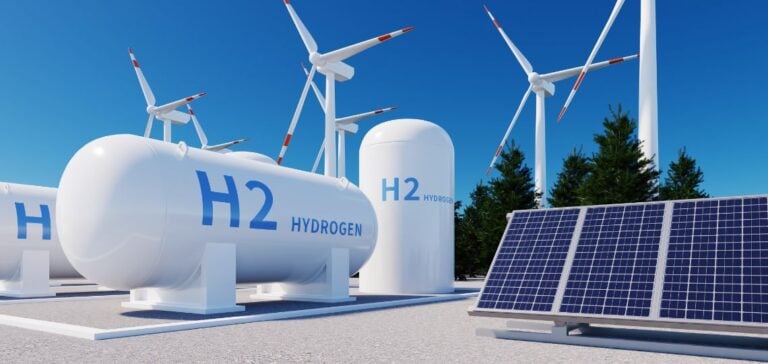Axpo, in partnership with Schätzle AG, EWA-Energie Uri, and SGV Holding AG, has begun construction of a hydrogen production plant in Bürglen, central Switzerland. The project, led by the H2Uri company, aims for an annual production capacity of 260 tonnes of hydrogen, using electricity supplied by the EWA-Energie Uri hydropower plant.
The Swiss energy group positions this installation within its diversification strategy and hydrogen development roadmap as an energy solution. This production will reduce the consumption of over one million liters of diesel across several regional applications.
Objective: Regional hydrogen supply
The plant will primarily supply the mobility and industrial transport sectors. SGV Holding AG plans to convert the passenger vessel Saphir, operating on Lake Lucerne, to a hydrogen propulsion system. This initiative addresses the increasing demand for alternative solutions in both public and private transportation.
Schätzle AG, which operates a hydrogen refueling station in the region, is also among the customers for this production. This local distribution model helps structure regional supply and meet growing business demands for alternative energy solutions.
Strategic positioning and economic stakes
The Bürglen project is part of Axpo’s industrial ambitions for hydrogen development. Guy Bühler, head of power plants and industrial gases at Axpo, stated that this initiative builds on the experience gained from the group’s existing plant in Domat/Ems.
The company is also strengthening its position with another project located in Wildegg-Brugg in the canton of Aargau. Construction of this plant, delayed by administrative procedures, is scheduled to begin in spring 2025.
Perspectives for the Swiss market
Hydrogen production at these new facilities aims to meet regional energy needs for industrial and mobility sectors while consolidating domestic supply security. Axpo is pursuing a strategic approach by structuring industrial partnerships to accelerate the implementation of projects across the hydrogen value chain.
Investments in these infrastructures mark a significant positioning for Axpo in a market still under development. However, according to the group’s executives, the economic and technical challenges of hydrogen development may slow the sector’s growth.






















